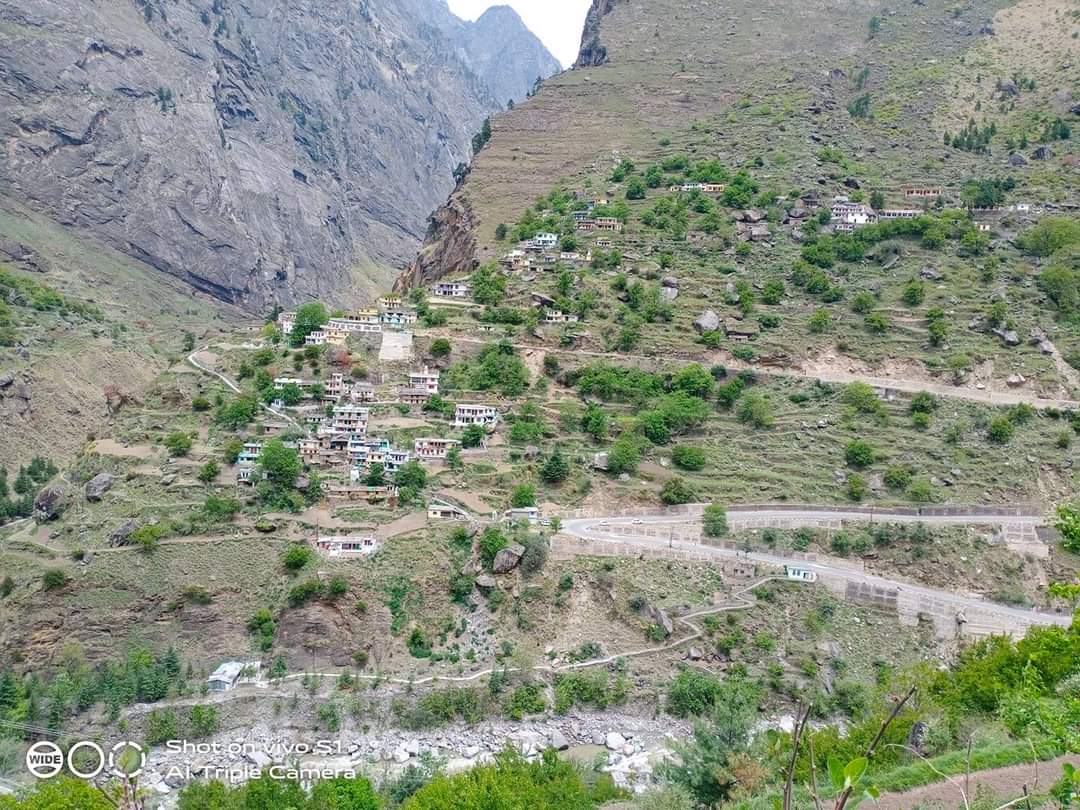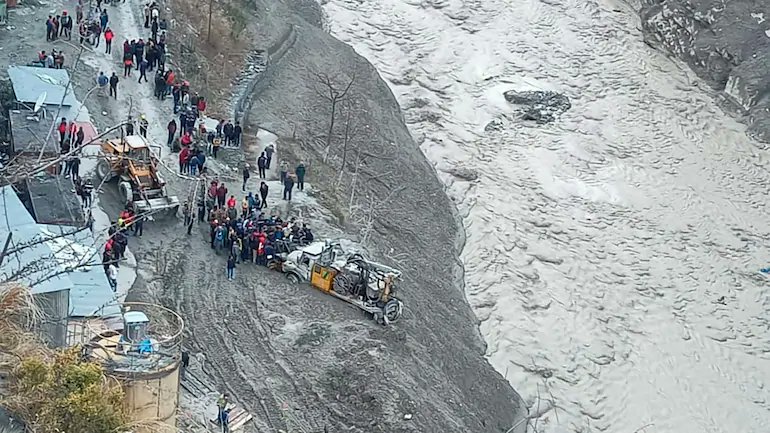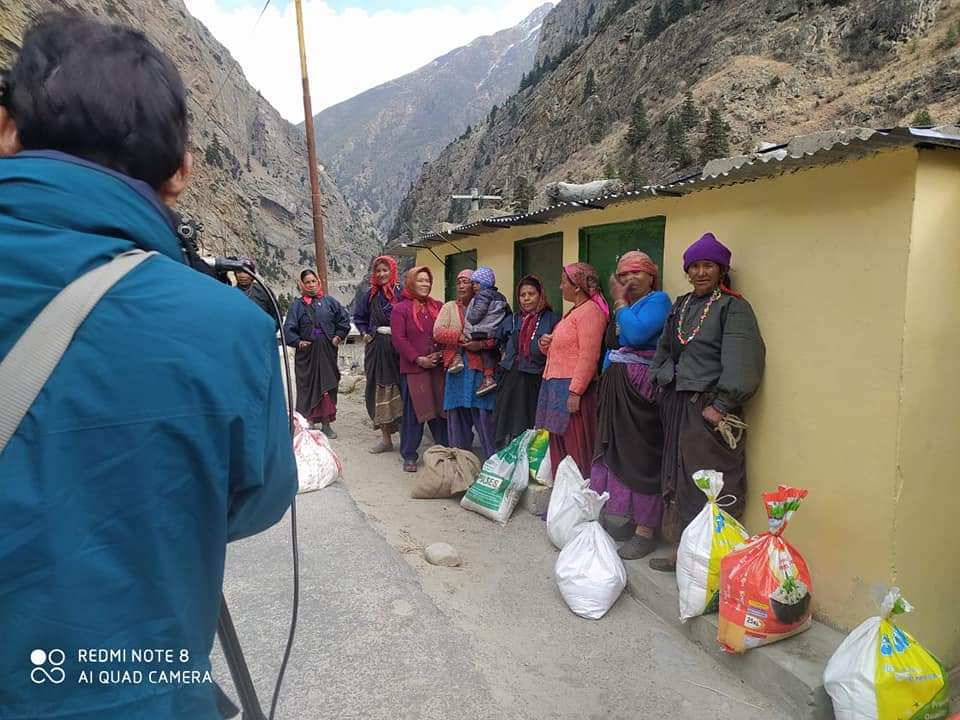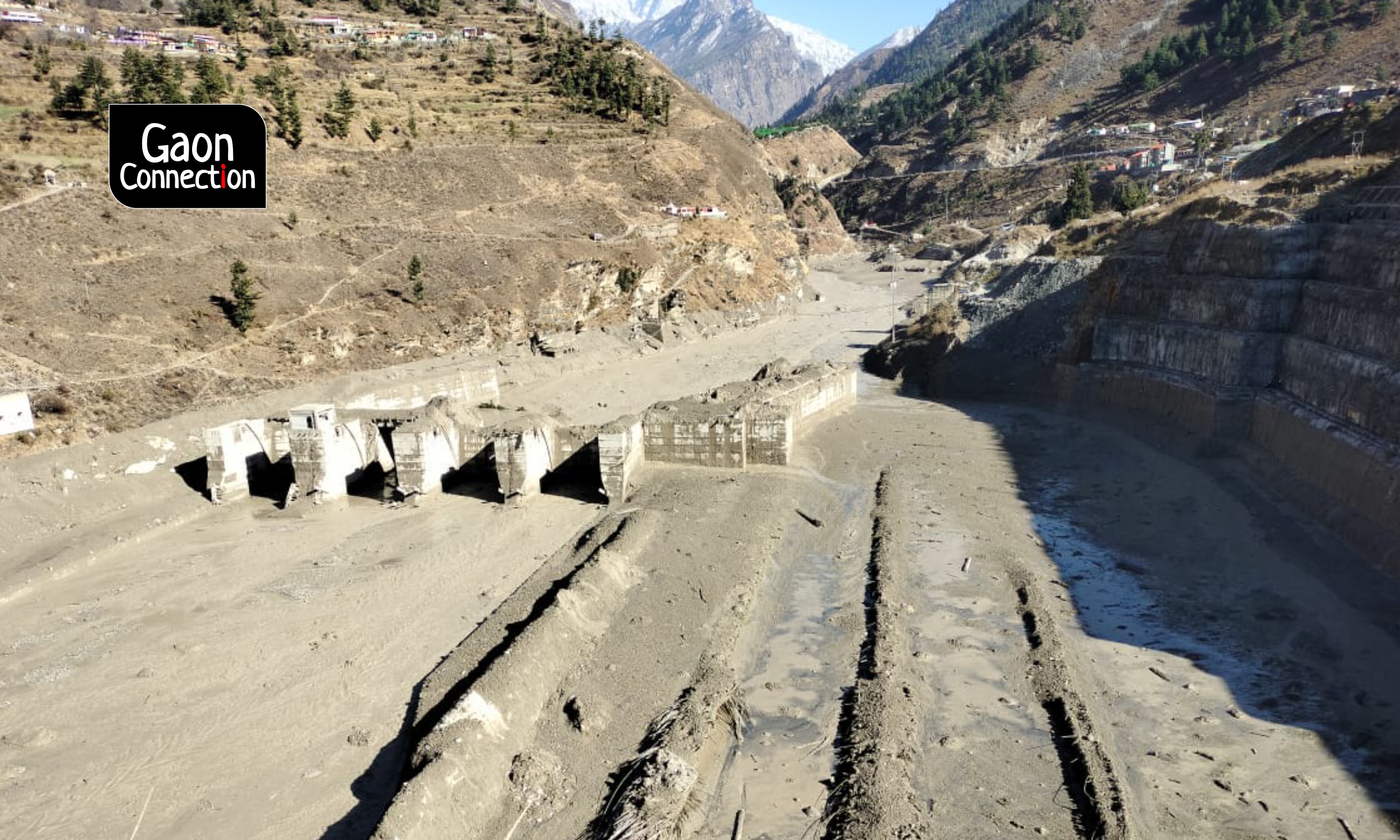Fear in the mountains: Following the Uttarakhand disaster, women, children and the elderly in 13 cut-off villages are terrified to return home
Despite the near-freezing temperatures, the residents of the 13 villages in Chamoli, affected by the landslide and flash floods, have been camping in the forests. They say their homes had already developed cracks due to the tunneling. Meanwhile, the water level in Rishganga and Dhauliganga rivers is reportedly rising again.

Dehradun, Uttarakhand
Brahmi Devi resides in Paing in Chamoli district, one of the 13 villages cut off from the rest of the region after the lone connecting bridge was washed away in the Uttarakhand disaster. She was among the first to witness the event unfold on the morning of February 7 in the snow-draped mountain region.
“I had gone to the forest to collect fodder and firewood when I heard a deep roar from behind the mountains. It felt like a thousand dynamite sticks were blasted simultaneously,” she told Gaon Connection. Thirty two bodies have been recovered and more than 200 people are still feared missing in the disaster that hit the region four days ago. About 25 to 30 workers are feared trapped in a tunnel and rescue work is on.

Brahmi Devi froze in fear for a moment when a massive dust ball moved towards the village from the hills above, but quickly gathered herself. “Before I could realise what was happening, a mountain of ice came down bringing with it boulders, silt, uprooted trees and water. I panicked, and ran down towards the village to alert the others. I could not keep pace with the water. Women who had taken their cattle downhill for grazing were washed away. The houses on the slope were buried under silt. The Earth was trembling,” she recalled.
It has been four days since the disaster that also damaged hydropower projects in Raini and Tapovan of Chamoli district. Because of the bridge snapping, 13 villages, including Brahmi Devi’s Paing, are completely cut-off. Raini village, the birthplace of the Chipko movement, is also cut-off. Essentials are being supplied through a zip-line, but the stranded villagers claim essentials are in short supply.

Raini and 13 other villages are located in the Niti-Mana Valley, bordering Tibet. People move from here to low-lying areas during harsh winters, and life here is full of hardship. Laxman Singh Butola, the young gram pradhan of Suki Bhalgaon village, told Gaon Connection that a motorable road was sanctioned in the early 1990s, but never constructed.
“During disasters, connectivity becomes a major challenge. Since the only connecting bridge was washed away, dry ration is being brought to the base of the village through a zip line that has been recently set up,” Butola explained.

Paing was one of the first villages to witness the fury of the waters, and women and children have abandoned their homes and sought shelter in the forest, despite the near-freezing temperatures. The elderly look worried. “We are very afraid. How will we escape if this happens again?” they asked.
Jyoti Devi, a member of the Paing gram panchayat, told Gaon Connection the villagers have no electricity or fuel to cook. Natural springs, which are their only source of drinking water, have been damaged too.
Shobhana Rana, gram pradhan of Paing told Gaon Connection that they have been living in constant fear. “The boulders have cracked due to the ongoing tunneling work for the dam projects. Even before the floods, small pieces broke off and damaged the village. The aftermath of the floods has left us homeless. Only yesterday did dry rations, a few lanterns and some soaps reach us.”
The fear of a similar incident repeating is so intense that the women of Paing are insisting they be relocated. “Our village is located on a boulder, which may break off anytime if something similar hits our region. Already, many of our homes have developed cracks due to the tunneling work, Baisakhi Devi a resident, told Gaon Connection.

Local villagers alleged that in the name of development, their region was being destroyed. Ambitious hydropower projects offer the local people a temporary source of income. Working as labourers, they earn between Rs 5,000 and Rs 8,000 a month, enough to keep their family fed. Some spend any remaining money on liquor. Some people even get a contract for river mining, the villagers said.
But, nothing has really changed at the ground level. There are no schools, no hospitals, and no roads. Ironically, despite the presence of projects that help generate electricity, the Uttarakhand hills are cloaked in darkness. “People’s homes are lit by the night sky or the morning Sun,” Atul Sati, an environmental activist working in Joshimath region for two decades, told Gaon Connection.
Meanwhile, the water level in the Rishiganga and Dhauliganga rivers has begun to rise, triggering fresh bouts of panic, Bhuwan Singh Rana, gram pradhan, Raini village, told Gaon Connection. As a result, the rescue operation at Tapovan tunnel, where about 30 workers are trapped, was temporarily halted this morning, before resuming with limited teams.

